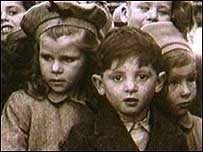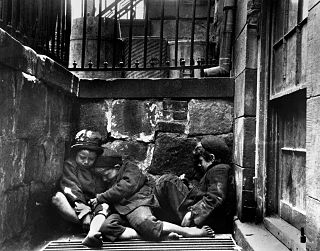
The United States Department of Health & Human Services (HHS), also known as the Health Department, is a cabinet-level executive branch department of the U.S. federal government with the goal of protecting the health of all Americans and providing essential human services. Its motto is "Improving the health, safety, and well-being of America". Before the separate federal Department of Education was created in 1979, it was called the Department of Health, Education, and Welfare (HEW).

The United States Department of Education, also referred to as the ED for (the) Education Department, is a Cabinet-level department of the United States government. It began operating on May 4, 1980, having been created after the Department of Health, Education, and Welfare was split into the Department of Education and the Department of Health and Human Services by the Department of Education Organization Act, which President Jimmy Carter signed into law on October 17, 1979.

The Child Online Protection Act (COPA) was a law in the United States of America, passed in 1998 with the declared purpose of restricting access by minors to any material defined as harmful to such minors on the Internet. The law, however, never took effect, as three separate rounds of litigation led to a permanent injunction against the law in 2009.

Foster care is a system in which a minor has been placed into a ward, group home, or private home of a state-certified caregiver, referred to as a "foster parent" or with a family member approved by the state. The placement of the child is normally arranged through the government or a social service agency. The institution, group home or foster parent is compensated for expenses unless with a family member. In some states, relative or "Kinship" caregivers of children who are wards of the state, are provided with a financial stipend.
International adoption is a type of adoption in which an individual or couple becomes the legal and permanent parent(s) of a child who is a national of a different country. In general, prospective adoptive parents must meet the legal adoption requirements of their country of residence and those of the country whose nationality the child holds.
The United States Children's Bureau is a federal agency organized under the United States Department of Health and Human Services' Administration for Children and Families. Today, the bureau's operations involve improving child abuse prevention, foster care, and adoption. Historically, its work was much broader, as shown by the 1912 act which created and funded it:
The said bureau shall investigate and report to [the Department of Commerce and Labor] upon all matters pertaining to the welfare of children and child life among all classes of our people, and shall especially investigate the questions of infant mortality, the birth-rate, orphanage, juvenile courts, desertion, dangerous occupations, accidents and diseases of children, employment, legislation affecting children in the several states and territories.
In the United States, adoption is the process of creating a legal parent-child relationship between a child and a parent who was not automatically recognized as the child's parent at birth.

Child protection is the safeguarding of children from violence, exploitation, abuse, and neglect. Article 19 of the UN Convention on the Rights of the Child provides for the protection of children in and out of the home. One of the ways to ensure this is by giving them quality education, the fourth of the United Nations Sustainable Development Goals, in addition to other child protection systems.
In many parts of the western world, mandated reporters are people who have regular contact with vulnerable people and are therefore legally required to ensure a report is made when abuse is observed or suspected. Specific details vary across jurisdictions—the abuse that must be reported may include neglect, or financial, physical, sexual, or other types of abuse. Mandated reporters may include paid or unpaid people who have assumed full or intermittent responsibility for the care of a child, dependent adult, or elder.
Child protective services (CPS) is the name of a government agency in many states of the United States responsible for providing child protection, which includes responding to reports of child abuse or neglect. Some states use other names, often attempting to reflect more family-centered practices, such as department of children and family services (DCFS). CPS is also sometimes known by the name of department of social services, though these terms more often have a broader meaning.
The Child Welfare League of America (CWLA) is the oldest child welfare organization in the United States. The organization's primary objective is to "Make Children a National Priority". The CWLA is the trusted authority for professionals who work with children and the only national organization with members from both public and private agencies, providing unique access and influence to all sectors of the children's services field.
Aboriginal child protection describes services designed specifically for protection of the children of "aboriginal" or indigenous peoples, particularly where these peoples are a minority within a country. They may differ at international, national, legal, cultural, social, professional and program levels from general or mainstream child protection services. Fundamental human rights are a source of many of the differences. Aboriginal child protection may be an integral or a distinct aspect of mainstream services or it may be exercised formally or informally by an aboriginal people itself. There has been controversy about systemic genocide in child protection systems enforced with aboriginal children in post-colonial societies.
The Anti-Trafficking in Persons Act of 2003, R.A. No. 9208, is a consolidation of Senate Bill No. 2444 and House Bill No. 4432. It was enacted and passed by Congress of the Philippines' Senate of the Philippines and House of Representatives of the Philippines assembled on May 12, 2003 and signed into law by President Gloria Macapagal-Arroyo on May 26, 2003. It institutes policies to eliminate and punish human trafficking, especially women and children, establishing the necessary institutional mechanisms for the protection and support of trafficked persons. It aims "to promote human dignity, protect the people from any threat of violence and exploitation, and mitigate pressures for involuntary migration and servitude of persons, not only to support trafficked persons but more importantly, to ensure their recovery, rehabilitation and reintegration into the mainstream of society."
The Association on American Indian Affairs is the oldest non-profit serving Indian Country protecting sovereignty, preserving culture, educating youth and building capacity. The Association was formed in 1922 to change the destructive path of federal policy from assimilation, termination and allotment, to sovereignty, self-determination and self-sufficiency. Throughout its history, the Association has provided national advocacy on watershed issues that support sovereignty and culture, while working at a grassroots level with Tribes to support the implementation of programs that affect real lives on the ground.
The Fostering Connections to Success and Increasing Adoptions Act of 2008 was an Act of Congress in the United States signed into law by President George W. Bush on October 7, 2008. It was previously unanimously passed in both the House of Representatives and in the Senate. The law made numerous changes to the child welfare system, mostly to Title IV-E of the Social Security Act, which covers federal payments to states for foster care and adoption assistance. According to child welfare experts and advocates, the law made the most significant federal improvements to the child welfare system in over a decade.
Transnational efforts to prevent human trafficking are being made to prevent human trafficking in specific countries and around the world.
A children's ombudsman, children's commissioner, youth commissioner, child advocate, children's commission, youth ombudsman or equivalent body is a public authority in various countries charged with the protection and promotion of the rights of children and young people, either in society at large, or in specific categories such as children in contact with the care system. The agencies usually have a substantial degree of independence from the executive, and generally operate as specialised ombudsman offices or national human rights institutions, dealing with individual complaints, intervening with other public authorities, conducting research, and – where their mandate permits them to engage in advocacy – generally promoting children's rights in public policy, law and practice. The first children's commissioner was established in Norway in 1981. The creation of such institutions has been promoted by the United Nations Committee on the Rights of the Child, and, from 1990 onwards, by the Council of Europe.

Foster care is the term used for a system in which a minor who has been made a ward is placed in an institution, group home, or private home of a state certified caregiver. The placement of the child is usually arranged through the government or a social-service agency. The institution, group home or foster parent is provided compensation for expenses.
The Child Welfare Information Gateway is the congressionally-mandated and -funded information service of the United States Children's Bureau, Administration for Children and Families, United States Department of Health and Human Services. It was established in 2006 to replace the National Clearinghouse on Child Abuse and Neglect Information and the National Adoption Information Clearinghouse. The Child Welfare Information Gateway covers child-welfare topics, including family-centered practice, child abuse and neglect, abuse and neglect prevention, child protection, family preservation and support, foster care, achieving and maintaining permanency, adoption, management of child welfare agencies and related topics such as child and family assessment, laws and policies, statistics and coincident family issues. Its website links to sources of print and electronic publications, websites, databases and online learning tools on these topics.
In many parts of the world, mandated reporters are people who have regular contact with vulnerable people such as children, disabled persons, and senior citizens, and are therefore legally required to ensure a report is made when abuse is observed or suspected. Specific details vary across jurisdictions—the abuse that must be reported may include neglect, or financial, physical, sexual, or other types of abuse. Mandated reporters may include paid or unpaid people who have assumed full or intermittent responsibility for the care of a child, dependent adult, or elder.





